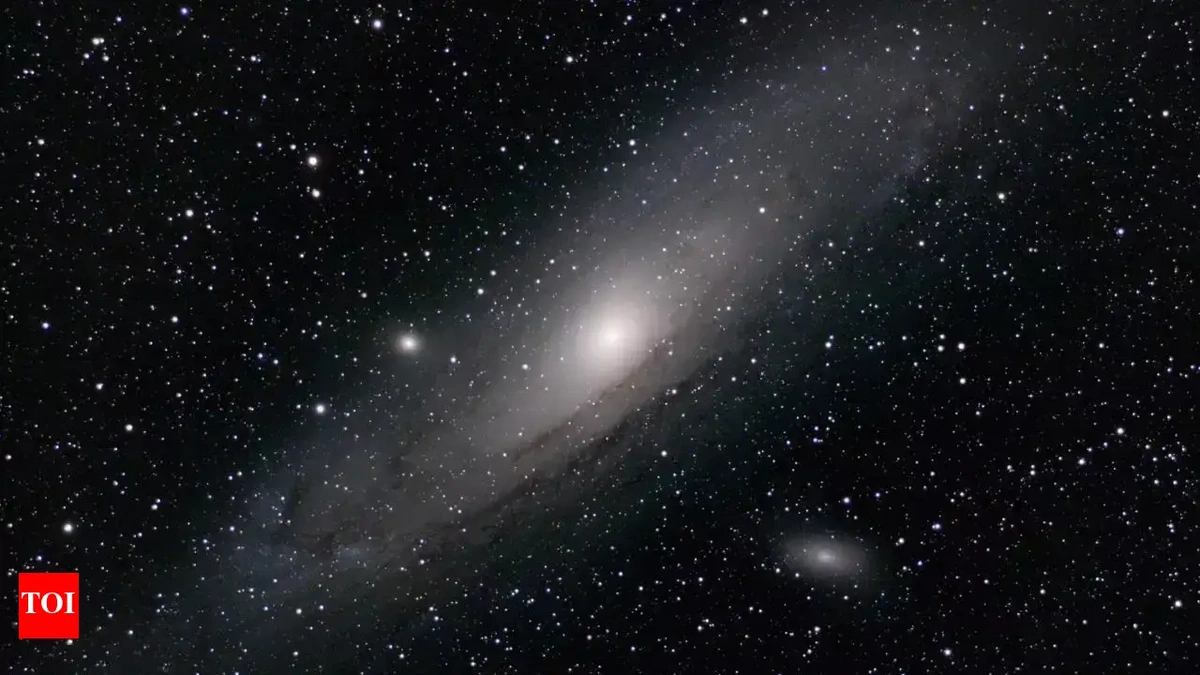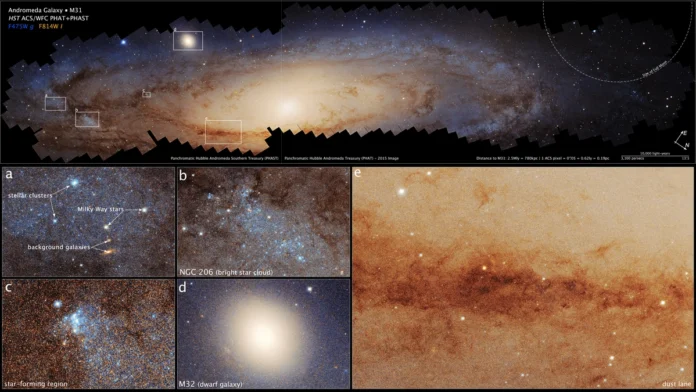The Andromeda Galaxy. Just the name conjures images of swirling colors and unimaginable distances. But it’s more than just a pretty picture. It’s a cosmic neighbor hurtling toward us, and its collision with the Milky Way will reshape our night sky. But, let’s be honest, space can feel a bit abstract. What does this all really mean for us? That’s what we’re diving into today.
Why Should We Care About Andromeda’s Impending Arrival?

Here’s the thing: cosmic timescales are, well, cosmic. We’re talking billions of years. So, no, you won’t wake up tomorrow with Andromeda as the new landlord. But understanding this galactic dance offers profound insights. First, it challenges our perception of the universe as static. Galaxies are dynamic, evolving entities. Second, it sheds light on the very processes that formed our own Milky Way. Studying the dynamics of the Andromeda Galaxy on Wikipedia helps us understand our own past and future. What fascinates me is the sheer scale of it all the universe is constantly in motion, and we’re just along for the ride. Thinking about the galactic collision is mind boggling.
And while scientists assure us that individual stars are unlikely to collide (the distances are vast), the gravitational upheaval will be immense. The shapes of both galaxies will warp and merge. Eventually, they will settle into a new, giant elliptical galaxy, sometimes nicknamed “Milkomeda.”
The Science Behind the Galactic Smash-Up
So, how do we even know Andromeda is coming? Scientists have been tracking its movement for decades. Using the Doppler effect – the same phenomenon that causes a siren to change pitch as it moves toward or away from you – they’ve measured that Andromeda is approaching us at about 110 kilometers per second. Let me rephrase that for clarity: that’s fast. Super fast. But even at that speed, it’ll take billions of years to arrive because space is, well, big.
A common misconception I see is that this is some kind of catastrophic event imminent to Earth. It’s not. According to NASA, simulations show the solar system may actually be flung into a different region of the new galaxy. Talk about an interstellar road trip!
The prediction of the collision is based on meticulous measurements and simulations. The European Space Agency’s (ESA) Gaia mission is providing incredibly precise data on the positions and velocities of stars, helping to refine our understanding of Andromeda’s trajectory. The Andromeda galaxy’s trajectory has been well documented. But, as with any scientific prediction, there’s always room for refinement as new data becomes available.
What Will the Night Sky Look Like After the Merger?
Imagine a night sky dramatically different from the one we know. Instead of the familiar spiral arm of the Milky Way, a vast, elliptical glow will dominate. The stars will be rearranged, new constellations will emerge, and the overall appearance of the heavens will be transformed. It’s like the ultimate cosmic redecorating project.
Of course, this is a very, very long-term forecast. Our Sun will have long since become a red giant and possibly faded into a white dwarf by the time Milkomeda takes shape. But future civilizations (or whatever evolves from us) will witness a sky unlike any we can imagine. The night sky will become more of an elliptical shape.
What fascinates me is how this event highlights the impermanence of things, even on a galactic scale. Galaxies aren’t static islands in space; they’re constantly interacting, merging, and evolving. It’s a reminder that change is the only constant in the universe.
Andromeda and the Search for Extraterrestrial Life
Here’s a thought experiment: What implications does the Andromeda galaxy impact have for the search for extraterrestrial life? If galactic collisions are common, might they trigger periods of increased star formation, potentially creating more opportunities for planets to form and life to emerge? Or, conversely, could the gravitational upheaval disrupt existing planetary systems, making it harder for life to survive?
These are open questions, and the answers are far from clear. But studying Andromeda and its interactions with the Milky Way can provide valuable insights into the conditions that might foster or hinder the development of life elsewhere in the universe. The search for extraterrestrial life is ongoing.
What fascinates me is the interconnectedness of everything. The fate of our galaxy is intertwined with that of Andromeda, and that interaction could have profound implications for the possibility of life beyond Earth. The presence of life elsewhere is a fascinating and ever-expanding topic.
Looking Ahead | What We Can Learn From Andromeda
Ultimately, the story of Andromeda is a story of cosmic evolution, change, and interconnectedness. By studying this galactic neighbor, we can learn more about the processes that shaped our own galaxy, the conditions that might foster life, and the ultimate fate of the universe. And, even more profoundly, about our place in this grand cosmic dance. The future of interstellar collisions may be more common than we think.
Andromeda isn’t just a distant galaxy; it’s a mirror reflecting our own past and a glimpse into our future. Understanding it helps us appreciate the dynamic, ever-changing nature of the cosmos and the incredible journey we’re all on together. We may be headed for a galactic collision, but, perhaps, the real collision is the collision of our own limited perspective with the vastness of the universe.
For another interesting deep dive, check out more about the EchoStar Corporation and its work in space technology.
FAQ | Your Andromeda Galaxy Questions Answered
What exactly is the Andromeda Galaxy?
It’s a spiral galaxy, much like our own Milky Way, and the closest major galaxy to us. It’s located about 2.5 million light-years away and contains billions of stars.
When will the Andromeda Galaxy collide with the Milky Way?
The collision is predicted to occur in about 4.5 billion years. So, don’t worry about making any immediate travel plans.
Will the collision destroy Earth?
Highly unlikely. While the gravitational forces will be immense, the vast distances between stars mean that direct collisions are rare. Our solar system might even be flung into a new region of the merged galaxy.
How do scientists know Andromeda is coming?
By measuring its velocity using the Doppler effect. They’ve been tracking its movement for decades and have determined that it’s approaching us at about 110 kilometers per second.
What will the merged galaxy look like?
It’s predicted to form a giant elliptical galaxy, sometimes nicknamed “Milkomeda.” The night sky will look dramatically different, with a vast, elliptical glow dominating the heavens.
What is the distance of the andromeda galaxy from Earth?
The Andromeda Galaxy is approximately 2.5 million light-years away from Earth.

